He called the journey “incredible” and a “crescendo,” with the Chargers’ move into their new facility now on the finish line.
The march to El Segundo, however, cannot be described using anything close to “fast.”
“I talked to some of the players,” Fred Maas said, “and I realized that when I started, Joe Alt was 13 years old.”
Alt is now the Chargers’ starting right tackle, the rookie entering the NFL in April as the No. 5 overall pick in the draft.
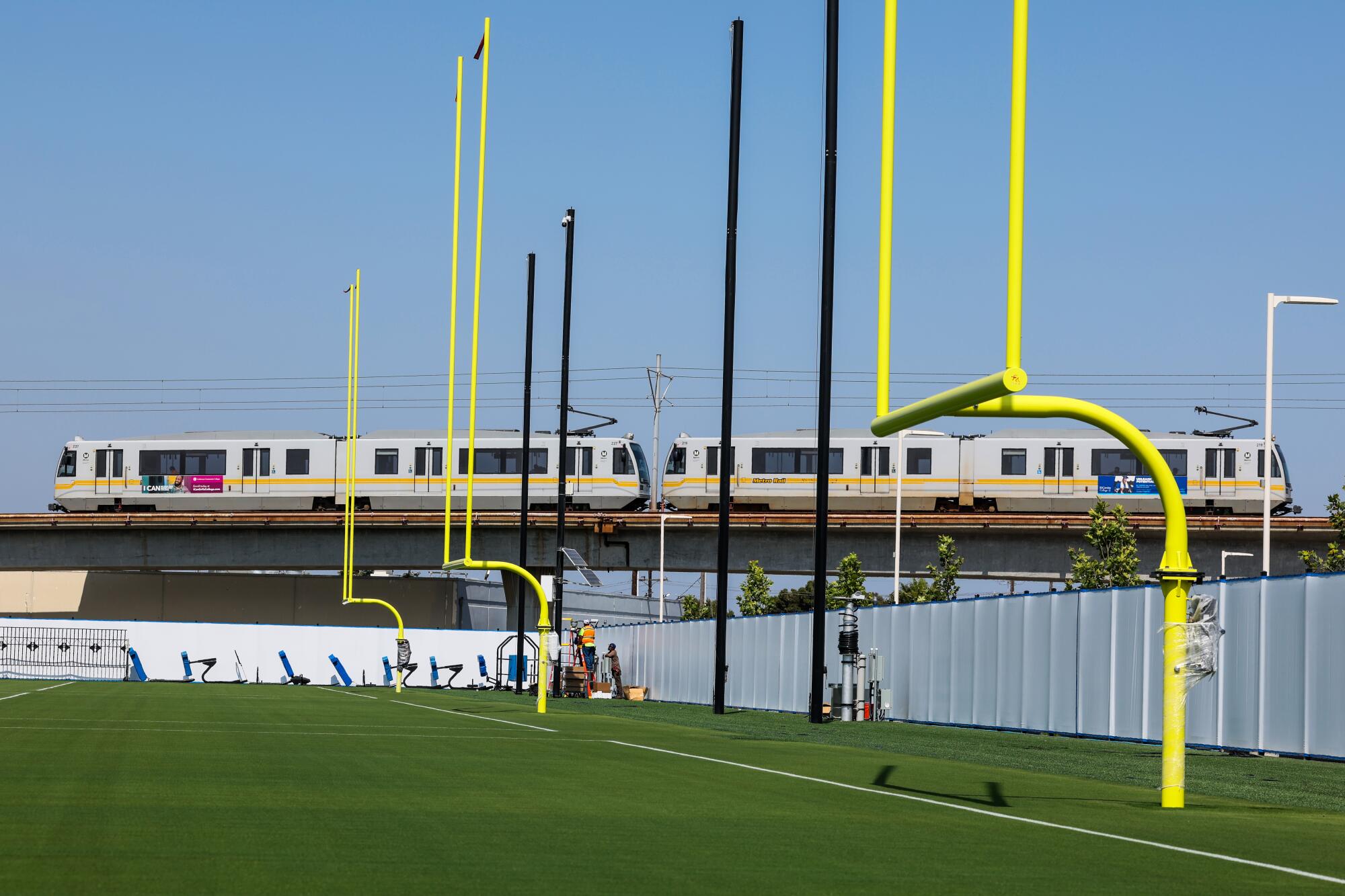
The eastern border of the Chargers’ practice fields is dominated by an LA Metro track.
(Robert Gauthier / Los Angeles Times)
Maas, the team’s chief of staff, began an extensive search for a new home around the time the Chargers announced their move from San Diego in early 2017.
They eventually settled on 14 acres just minutes from LAX, broke ground in May 2022 and officially opened last month after seven seasons in a temporary home in Costa Mesa.
“In terms of moments of arrival in Los Angeles, I think it was a big step forward when we went from Dignity (Health Sports Park) to SoFi (Stadium, in 2020),” Maas said. “It’s like the cherry on top.”
The next step will come when the Chargers’ rookies report to training camp Tuesday, followed by the quarterbacks. The full team is scheduled to begin practices July 24 on the facility’s three natural-grass fields.
While there may be a sense of completion, the Chargers’ move remains in flux, as new problems – missing electrical outlets, mismatched television stands, faulty refrigeration units – emerge daily.
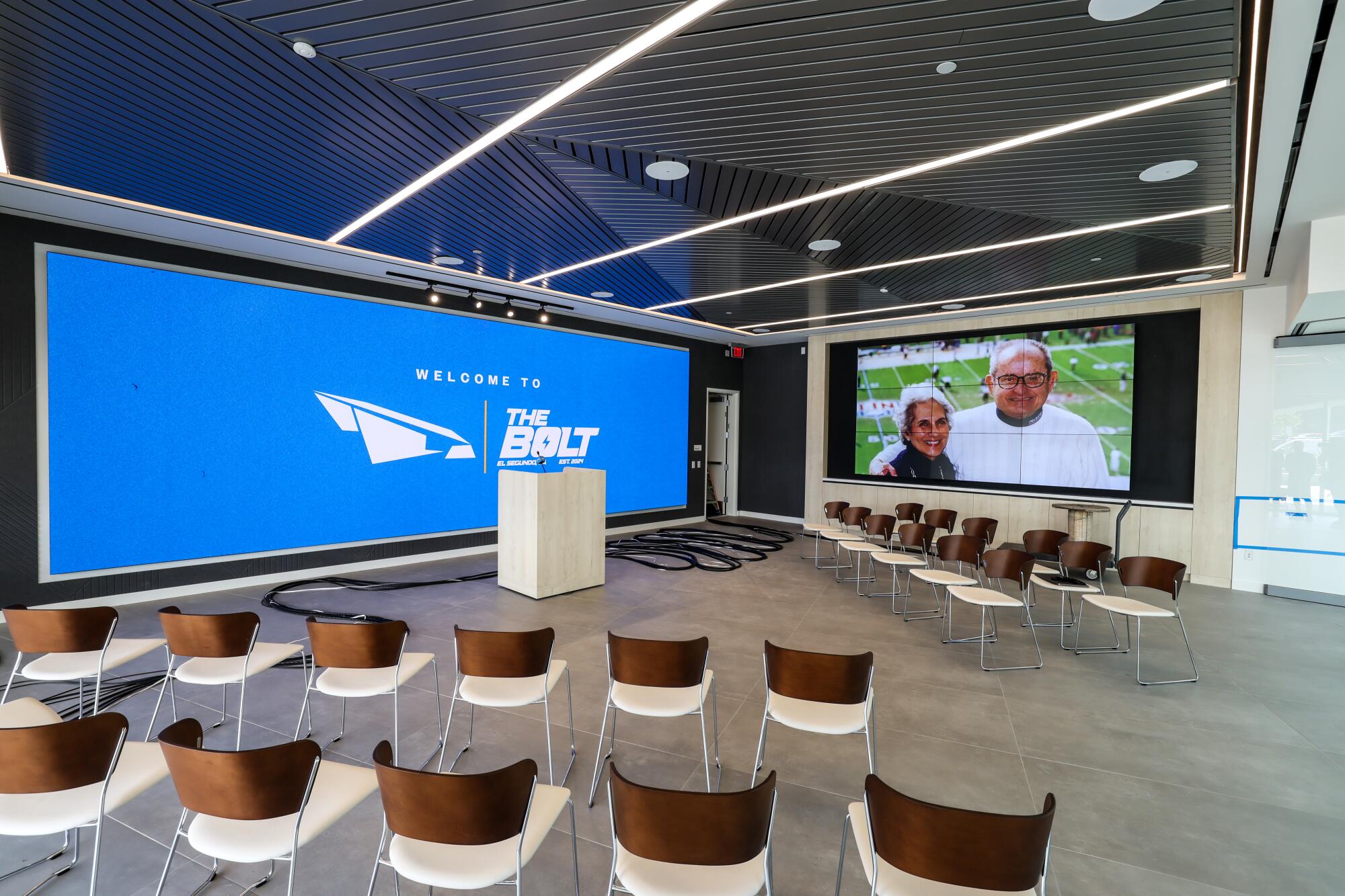
The press conference room has large screens and spaces for different types of functions.
(Robert Gauthier / Los Angeles Times)
“Usually 80 percent of the problems are in the last 5 percent of a project,” said Maas, a development industry veteran. “That’s kind of how I feel now. It’s an impressive building. We’ve accomplished a lot. But all I see are problems.”
The building is striking with its “Chargers Walk of Fame” leading to the front door, its three-story video screen in the lobby and its angled roofline designed as a nod to the team’s lightning bolt identity.
In fact, much of the venue is cut at sharp angles — from the exterior sidewalks to the interior staircase to the landscaping around it — as the Chargers embrace their branding.
“We sat down and said, ‘Let’s create something that’s really an icon of who we are,’” Maas said. “It’s all part of the DNA of what we wanted the building to reflect the franchise.”
The Walk of Fame features all 43 members of the Chargers Hall of Fame and was designed to resemble the star-lined sidewalks of Hollywood. To do the work, the team hired Top End Terrazzo, the company that created the world’s most famous Walk of Fame, about 15 miles north.
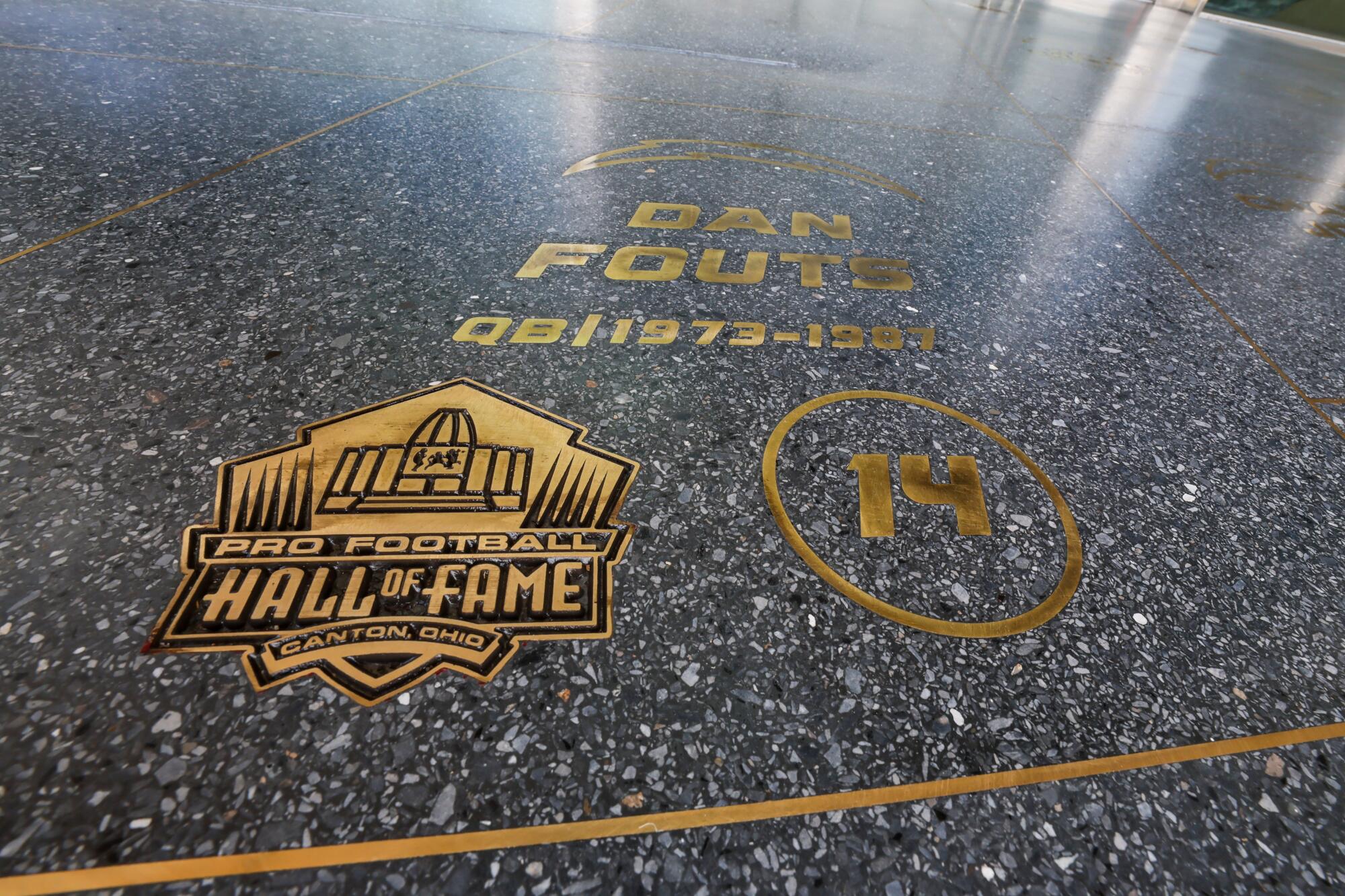
Famous Chargers, including Dan Fouts, are immortalized in Hollywood Walk of Fame style outside the facility.
(Robert Gauthier / Los Angeles Times)
So names from the past like Lance Alworth, Dan Fouts and Kellen Winslow are literally paving the way for the Chargers’ present, where the most prominent element of the new building will soon greet visitors just inside the main entrance.
A desk is being carved in Santa Ana from a 22-ton blue and white stone (in the Chargers’ colors) from Brazil. The stone was so large it had to be cut into four sections before being transported.
The first floor features a large locker room that can accommodate 104 players, as well as numerous player lounges and an indoor/outdoor weight room that covers 11,000 square feet.
There is an outdoor rehabilitation and swimming pool not far from where athletic trainers will work with players to manage injuries and new executive director of player development Ben Herbert will try to prevent players from getting injured in the first place.
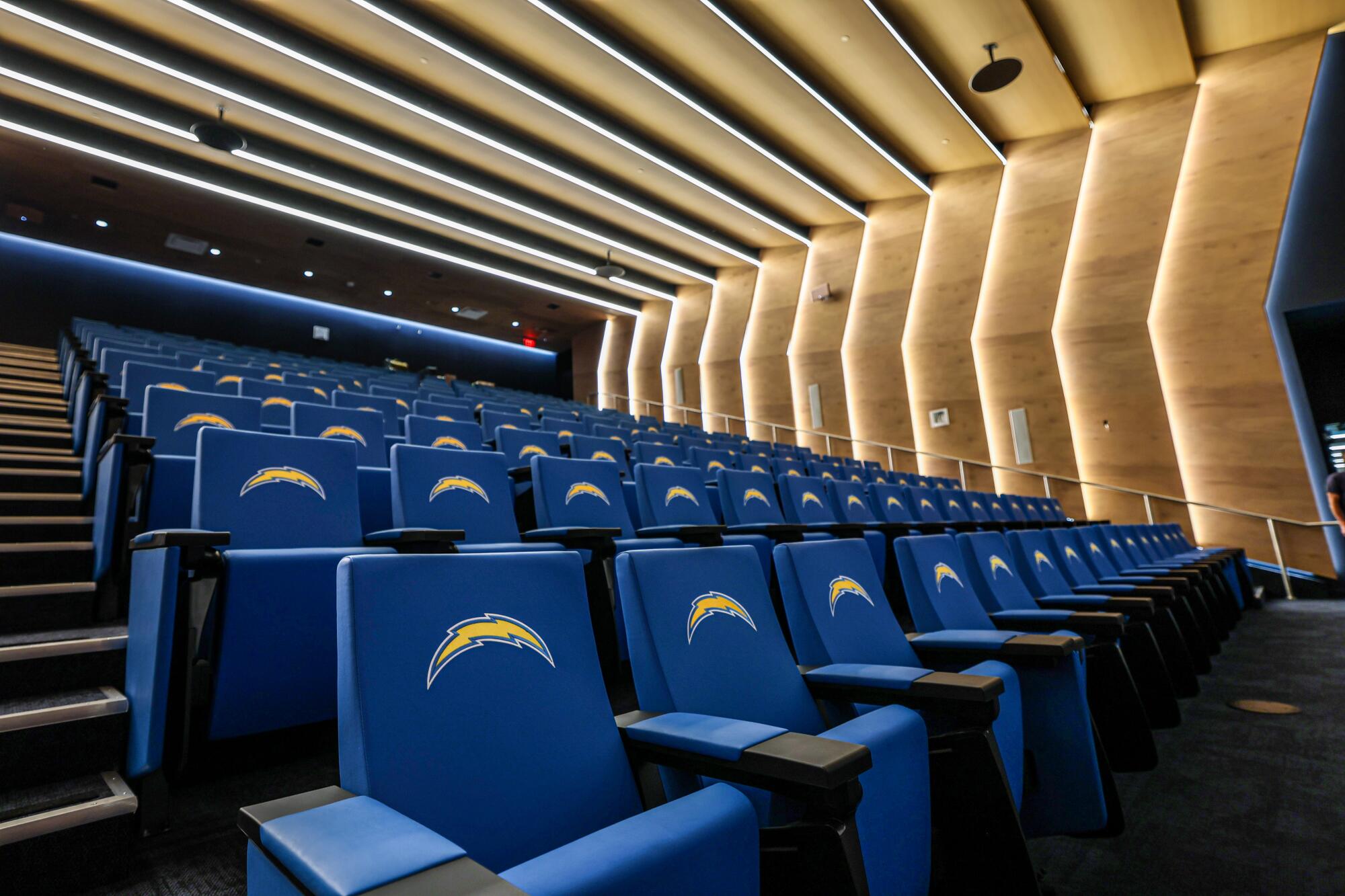
The auditorium at the Chargers’ new facility seats 173 and features theater-quality acoustic panels.
(Robert Gauthier / Los Angeles Times)
Perhaps the most impressive space in the building is on the upper floor: a two-story auditorium that will serve as a meeting room for the entire team. It is equipped with 173 seats and theater-quality acoustic panels.
Maas described the auditorium as “Carnegie Hall meets the Chargers,” adding that the venue will be available during the offseason as an event venue for non-team functions.
The second floor houses the cafeteria and all position group rooms, as well as an outdoor grass area for smaller teaching sessions.
The cafeteria will be run by Wolfgang Puck Catering — “I think it will rival any company in Los Angeles,” Maas said — and will feature a pizza oven covered in mosaic tiles that resemble a Chargers helmet.
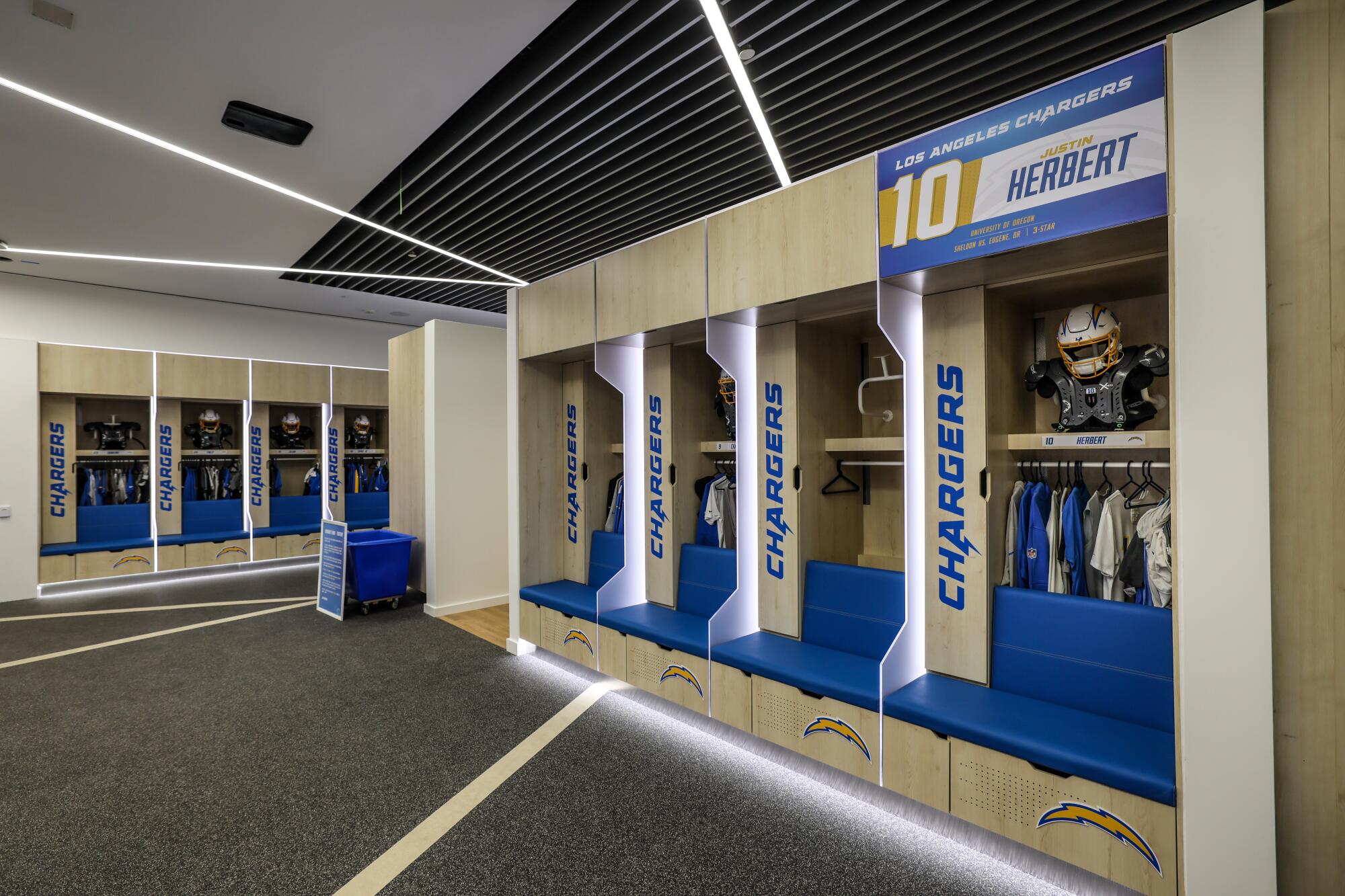
The locker room at the Chargers’ new facility can accommodate 104 players.
(Robert Gauthier / Los Angeles Times)
“The best confirmation was from the players, who came to us and said, ‘Thank you for bringing us all this,'” Maas said. “I’ve never heard that before. It’s encouraging.”
A large portion of the third floor is taken up by a private, members-only indoor/outdoor club that will be accessible to corporate partners and fans looking for a more upscale experience.
From the clubhouse’s wraparound balcony, you can see downtown Los Angeles, SoFi Stadium and, on a clear day, the Hollywood Sign. The view is a significant improvement for a team that spent seven years looking out the back of the Ikea store in Costa Mesa.
The Chargers have dubbed their new home “The Bolt,” a name coined by Jason Lavine, the team’s senior vice president of creative and brand content. Maas said the Dallas Cowboys’ coveted headquarters provided some inspiration.
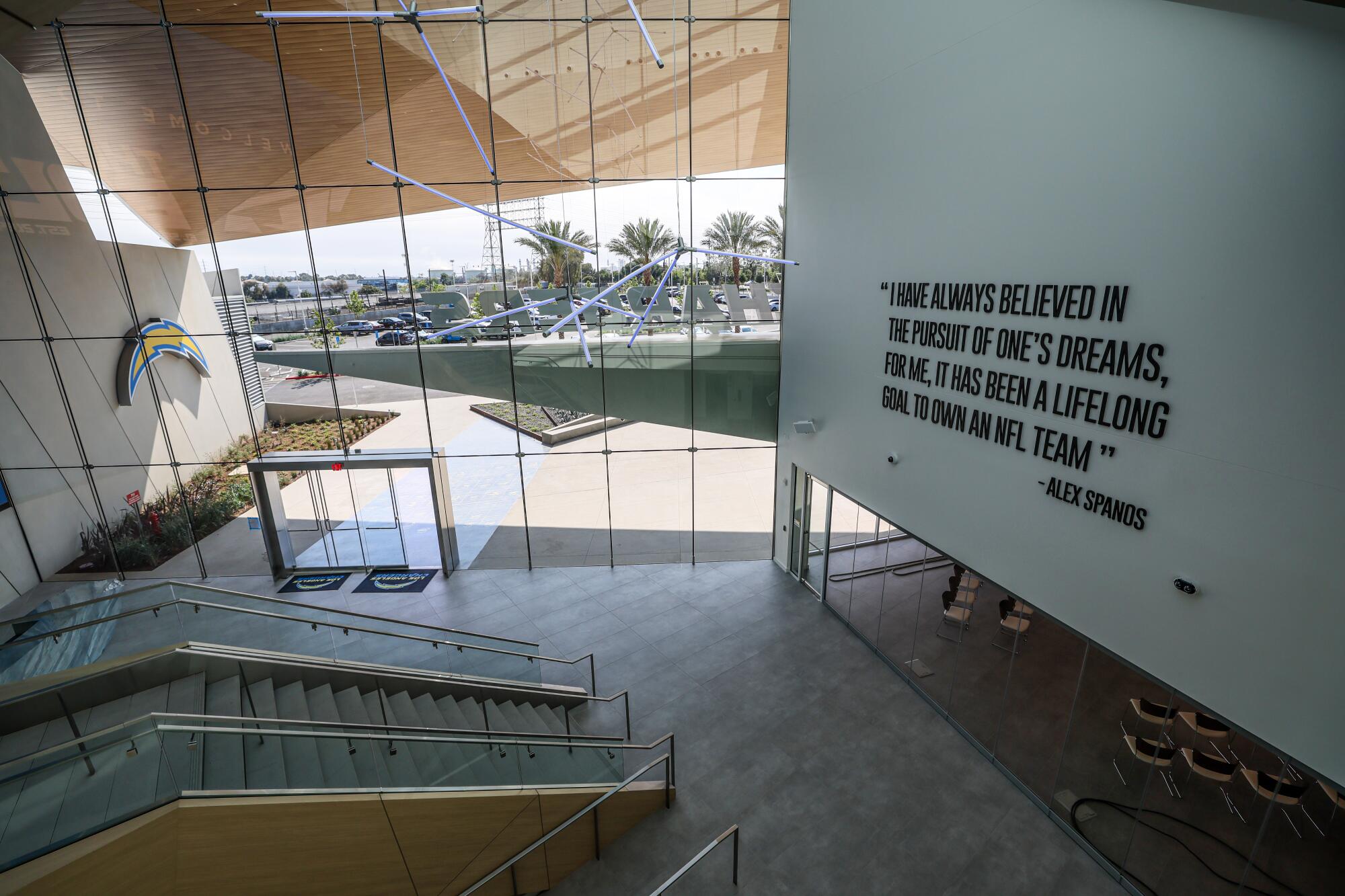
Much of the Chargers’ new facility is cut at sharp angles — from the exterior sidewalks to the interior staircase to the landscaping around it.
(Robert Gauthier / Los Angeles Times)
“Did The Star have any influence on this project?” he said. “Absolutely. But it’s really who we are. It embodies the organization, the brand. It just made sense. I think we all embraced it.”
For a team that typically practiced in the parking lot of Qualcomm Stadium, the Chargers have entered a new era, a 150,000-square-foot exclamation point to the momentum generated this offseason.
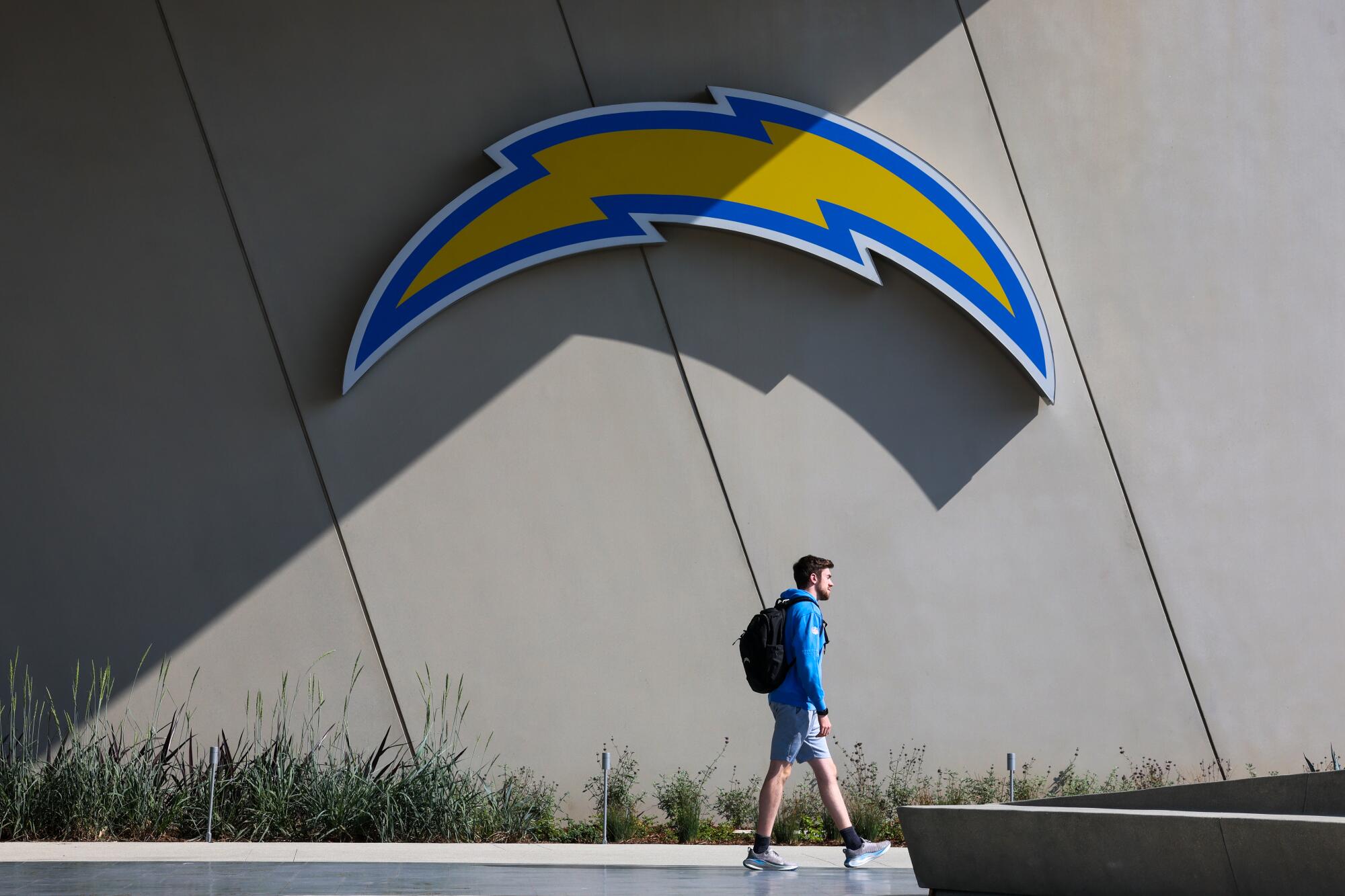
The Chargers’ new home is called “The Bolt,” a naming convention partly inspired by the Cowboys’ building known as “The Star.”
(Robert Gauthier / Los Angeles Times)
Since Jim Harbaugh’s arrival in January, it’s been a franchise on the rebound, with all questions about the Chargers’ long-term future in Los Angeles remaining muted.
“Now it’s going to change the way we play on the field,” Maas said. “I have to tell you, I’ve never felt what we’re going through right now with Coach Harbaugh and what he’s doing. If we were a stock, I’d put an up arrow next to us.”